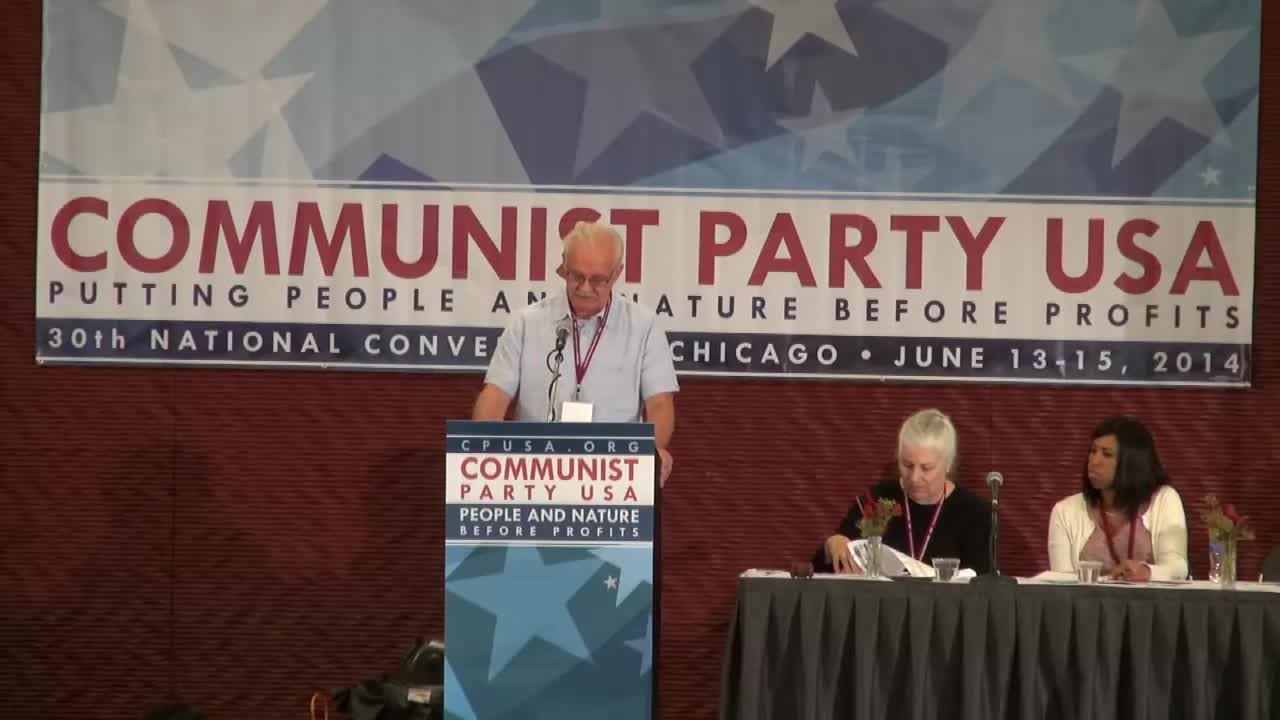The Secret World of American Communism

Since its inception, the Communist Party USA was subordinated to the Comintern, which, in turn, took orders from the Bolshevik leadership in the Kremlin.
Marek Jan Chodakiewicz
After the Bolshevik takeover in 1917, the American right began to quarrel about Communism with the domestic left. Without appropriate documents, the right could not prove its anti-Communist charges. Consequently, the left jeered at the right for the latter’s alleged paranoia. The left was able to depict anti-Communism as an assault on American liberties. From the legal point of view, the dispute was idle because neither of the parties involved was able conclusively to prove its argument. The conservatives felt frustrated. Their reaction was bitter, sometimes verging on rabid incoherence. Exuding sophistication, the liberals triumphantly mocked their opponents every step of the way.
All of this has changed with the opening of the Soviet archives of the Communist International (Comintern). Now it is clear that the conservatives were right all along.
The editors of The Secret World of American Communism perused thousands of files and tens of thousands of official memos, notes, and letters. They published 92 key documents. Secret meetings, false identities, funds from Moscow, Soviet spy schools, theft, kidnapping, and assassination were all part and parcel of the activities of the agents of the Kremlin. In other words, practically everything the liberals dismissed with condescension as a reflection of the alleged anti-Communist paranoia, is true. As the editors of the volume put it:
“It is no longer possible to maintain that the Soviet Union did not fund the American party, that the CPUSA did not maintain the covert apparatus, and that key leaders and cadres were innocent of connection with Soviet espionage operations. Nowhere in the massive Comintern archives or in the American party’s own records did the authors find documents indicating that Soviet or CPUSA officials objected to American Communists cooperating with Soviet intelligence or even having second thoughts about the relationship. Both the Soviet Union and the American Communist leadership regarded these activities as normal and proper. Their only concern was that they not become public.”
The Communist Party of America was founded in 1919 under Charles Ruthenberg. At the same time, John Reed and Benjamin Gitlow formed the Communist Labor Party. Both groups united as the Communist Party of the USA (CPUSA). Its aim was to destroy the United States as we know it. The party enrolled about 34,000 members. The majority came from Eastern Europe. A bit more than 10% of the members could speak English. In the succeeding decades, about a million people joined the CPUSA for shorter or longer spells.
Since its inception, the CPUSA was subordinated to the Comintern, which, in turn, took orders from the Bolshevik leadership in the Kremlin. Since the beginning, the Soviet secret services employed American Communists as spies, collaborators, and agents of influence. Intellectuals and journalists were prominent among the spies. They were propelled by a fanatic ideology and assisted by Soviet money. Thus, they suavely combined business and pleasure. John Reed, for instance, was paid a million dollars for his romantic depiction of the Bolshevik takeover, Ten Days That Shook The World. Others also benefited from the Kremlin’s warm embrace in terms of money or professional success: the poet Tillie Olsen, who effused that under Stalin “a heaven…[was] brought to earth in Russia;” the journalist Walter Duranty, who apologized for the Soviet collectivization in the thirties that took 15 million human lives; and the press correspondent Edmund Stevens, who praised the Nazi-Soviet Pact and called Stalin’s dictatorship “a form of democracy, elementary if you will, but more genuine and pure within its limited scope than any American institution except the town meeting, to which in many ways it closely corresponds.” Of course, much lionized on the pages of the New York Times for “fair and accurate reporting” from the USSR, both Duranty and Stevens were Pulitzer Prize winners.
Until his death as a retiree in Moscow in 1991, Stevens always denied that he had ever been a Communist party member. Well, he was. And so were many other prominent men and women of letters. One of them, the columnist Joseph Spivak, carried out a masterful propaganda provocation to emasculate the New York City anti-Communist police leadership. The liberal pundits considered him “an independent journalist.” Throughout, Spivak falsely denied any affiliations with the CPUSA.
The feminist icon Agnes Smedley showed even more chutzpah. After her long sojourn in China, the U.S. Army accused her in 1949 of being a Communist agent. Smedley threatened to sue. Because of the lack of evidence, the Army retracted its accusation and apologized publicly. As late as 1988, two authors denied the charges, calling her “a freelance revolutionary.” In fact, as has been now proved beyond any doubt, she was a paid Comintern agent.
Similarly, the atomic spies Ethel and Julius Rosenberg were secretly Communists but refused ever to acknowledge it publicly. They were executed by the U.S., but nonetheless, like Smedley and others, they were idealized by the liberals.
Arguably, the most famous participants in the Soviet espionage network were Julius Hammer, M.D., and his son Armand. Hammer senior was a secret co-founder of the CPUSA. In 1917, he breached the Allied blockade of Bolshevik Russia, thus initiating trade with that country. His trade organization was a cover for espionage activities. In 1919, Dr. Hammer was arrested in the U.S. because a patient died following a botched abortion he had performed. After the father’s release from jail in 1923, the Hammers spent some time in the Soviet Union, living in an aristocratic chateaux. Soon, however, they returned to the U.S., where they sold art and jewels looted by the Bolsheviks from private Russian collections. In addition, the Hammers laundered money for the Soviet espionage network. As numerous complaints attest, they were not quite honest in accounting for the funds; they became multimillionaires. But the Soviet secret police forgave them for the embezzlement. In the seventies and eighties, Hammer junior signed commercial multimillion-dollar deals with the Kremlin for his Occidental Petroleum corporation.
Not everyone made out on revolutionary idealism as handsomely as Reed or the Hammers did. For instance, Albert Wallach volunteered to fight in Spain during the Civil War (1936–1939). When he realized he was fighting Stalin’s war, Wallach contacted the U.S. consulate in Barcelona and attempted to return home. The Communists shot him as a spy. Perhaps as many as 500 Americans suffered a similar fate in Spain, most of them on suspicion of having joined “deviationist” leftist groups. They were denounced by their own comrades. As a rule, the ideological cohesiveness of the CPUSA was maintained by such denunciations. For instance, in Buffalo, Comrade Herron was forced to publicly renounce his wife, who had been expelled from the party for Trotskyism. Despite the renunciation, Herron continued to pay “secret visits to her.” This was duly noted by other comrades. Accordingly, Herron was denounced, demoted, and ostracized.
The American Communists concerned themselves with everything that expedited the cause or the “world revolution” and helped the Soviet Union. For instance, in 1933, an American informant notified the Soviet center that he had heard from a family member in New York City that his relative, Solomon Rechter, living in Moscow, was an agent of the “black-shirts,” or the national-radical New Zionist Organization “Beitar.” This denunciation undoubtedly meant death for Rechter.
The eavesdropping activities were not limited to New York City’s Jewish neighborhoods. Under the leadership of Alger Hiss, Soviet intelligence penetrated the State Department. They even enjoyed indirect access to President Roosevelt himself. His progressive wife, Eleanor, unwittingly kept company with several Communist sympathizers.
The pragmatic decision to employ Communists in the anti-Nazi operations of the Office of Strategic Services (OSS) proved to be a very dangerous mistake. Drawing liberally from the American taxpayer, the Communists established their pro-Moscow cells in Italy and the Balkan countries. They attempted to recruit agents within the OSS itself. They informed their Kremlin superiors about various secrets of the American intelligence establishment.
Day in and day out, the Communists worked hard to undermine the United States. The crushing evidence of such activities led the editors of this volume to conclude that the CPUSA “assisted Soviet intelligence and placed loyalty to the Soviet Union ahead of loyalty to the United States.” The same holds true for Communist parties the world over.
We would like to thank prof. Marek Jan Chodakiewicz for sharing this article.



